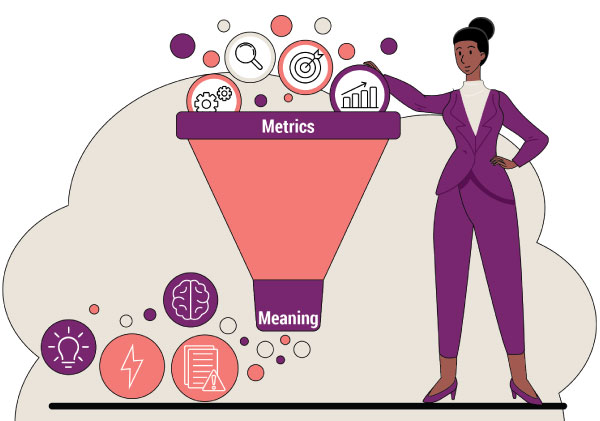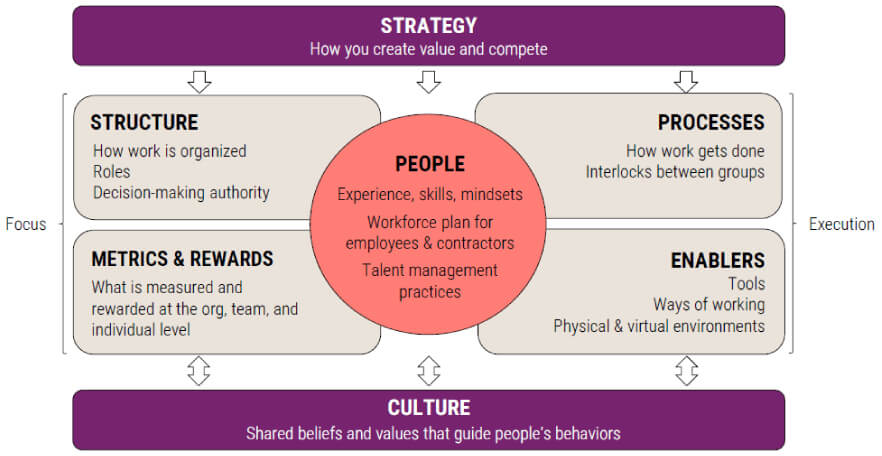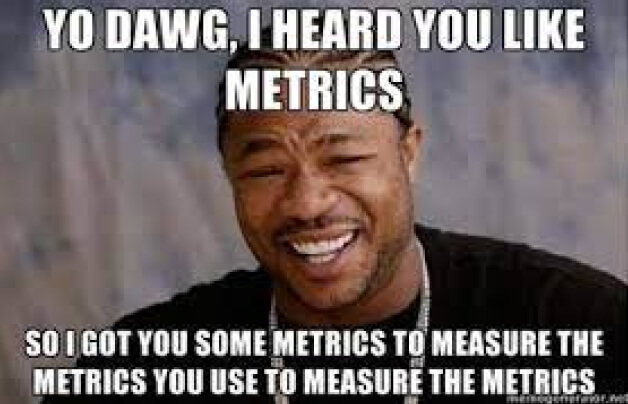Finding Meaning in the Metrics: Using Metrics for Good in Our Organizations
Data is the bread and butter of any data-driven organization, and understandably so! The data can offer a straightforward way to gauge performance, right?

Well, not so fast. Just as the financial world cautions that “past performance is not indicative of future results,” so too should we be wary of placing undue faith in any and all metrics. It’s not that metrics are inherently bad or unreliable; it’s that they can so easily be misused, taken out of context, manipulated, or simply, used to make decisions that don’t necessarily correlate to the outcomes we’re striving for.

What are Metrics and Why Do They Matter?
Metrics are quantitative measures used to assess, compare, and track performance or productivity. They serve as vital tools in our organizations for evaluating progress towards goals, identifying trends, and informing strategic decisions. Essentially, they guide behaviors and prioritization. At BOxD we think of metrics as a key ingredient in our Organizational Design Sandwich:

But these data points are more than just figures for stakeholder updates; they are a fundamental component of your organization’s design.

The Bright Side of Metrics
Metrics, when utilized wisely and with intention, hold immense power to direct individuals, teams, and entire organizations towards achieving their goals. Here’s how to effectively develop and implement metrics that work:
- Go Beyond Standard Business Metrics: Start by identifying key behaviors and outcomes that align with your long-term strategic goals. This approach ensures your metrics reflect the vision, goals, and values of your organization, such as customer satisfaction or innovation, rather than just financial performance.
- Develop Balanced Metrics for Enhanced Performance: Craft a set of metrics that mirror these desired behaviors and outcomes while encouraging continuous improvement. Like a step-counter motivating more walking, these metrics should spur improved performance and goal attainment, offering insights into what’s working well and areas for enhancement.
- Prioritize and Make the Invisible Visible: Not everything measurable is worth measuring. Pick only the ones that will point people in the right direction.
- Create a Reward Ecosystem that Fosters Alignment and Focus: Incentivize the right metrics with a diverse reward system. This not only boosts performance but also aligns everyone with the company’s vision and objectives. Rewards can range from monetary compensation to recognition and growth opportunities, enhancing team morale and collective achievement.
- Regularly Review and Adapt for Data-Driven Decisions: Continuously evaluate and adjust your metrics to ensure they facilitate informed, data-driven decisions. In a world swamped with gut feelings and hunches, metrics offer the solid ground for making decisions to continue pressing forward or pivot where it’s prudent to do so.
By thoughtfully integrating these strategies, organizations can ensure that their metrics not only measure success but actively contribute to it, creating a culture of transparency, accountability, and shared purpose.

The Less Helpful Side of Metrics
Sometimes, what seems like a logical metric to track can lead to unexpected pitfalls. Let’s explore some of the less helpful aspects of metrics that organizations should be wary of:
Tunnel Vision: Hyper focusing on specific metrics, such as quarterly revenue targets, can cause organizations to miss the broader picture. This might lead to neglecting vital areas like employee skill development and training, which are crucial for long-term growth and adaptability.
Short-termism: An excessive focus on short-term metrics, especially in financial decision-making, can overshadow long-term sustainability and innovation. For instance, cost-cutting measures might result in decisions that compromise future employee competency and morale, like reducing training programs.
Teammate Disengagement: A disproportionate focus on metrics like task completion rates can create a transactional work environment. This approach may diminish team morale and the sense of collective achievement by undervaluing individual contributions beyond mere numbers.

The Downright Ugly Side of Metrics
Venturing further into the dark side of metrics, we encounter scenarios that not only hinder progress but can actively damage an organization’s integrity and culture. These are the downright ugly aspects of metrics misuse that can lead to some serious organizational challenges:
Quality Compromise: When the focus is strictly on meeting quantitative targets, such as report numbers or project completions, it can lead to a preference for speed over quality. This rush can result in subpar work and missed crucial details.
Unethical Behavior: The pressure to achieve aggressive performance metrics might tempt staff to resort to unethical practices, such as data manipulation or shortcutting procedures, thereby eroding ethical standards.
Blindness to Context: Strict adherence to metrics without considering the bigger picture can lead to decisions that don’t align with real-world complexities, like market shifts or employee needs, resulting in misaligned organizational strategies.
Resource Misallocation: An overemphasis on easily quantifiable areas, such as sales or production figures, may cause a neglect of vital but less measurable aspects of the business, like employee development or innovation, leading to an imbalanced distribution of resources.

A Micro-Case Study: Wells Fargo
In the pursuit of ambitious sales targets, Wells Fargo presents a cautionary tale on the dangers of misapplied metrics. The banking giant set high cross-selling targets, encouraging teammates to open multiple accounts for customers to meet aggressive sales goals. This metric, intended to drive business growth, instead cultivated a high-pressure environment.
Under immense stress to fulfill these targets, some teammates resorted to opening unauthorized accounts in customers’ names, without their knowledge or consent. Over time, this practice snowballed into a massive scandal, with millions of fake accounts created.
This debacle not only cost Wells Fargo billions in fines and settlements but also inflicted severe damage to its reputation and trust with customers. The incident underscores the importance of designing and implementing metrics that encourage responsible behavior, prioritize customer interests, and maintain organizational integrity.

How to Get it Right
The right approach to metrics can help us avoid the traps that lead to setbacks and organizational harm. Here are a few ways we can make sure our data points serve as tools for positive growth and alignment:
Choose Wisely: Selecting the right metrics is crucial for aligning with an organization’s strategic goals and core values. Being judicious when selecting what to measure ensures that you aren’t merely collecting “vanity metrics” but are instead choosing to track data and outcomes that reflect what the organization stands for and aims to achieve, driving meaningful progress in its core mission areas.
Balance is Key: A balanced approach to metrics, combining both qualitative and quantitative elements, is essential for a comprehensive understanding of organizational performance. This dual approach allows for a holistic view, capturing both the tangible outcomes and the underlying processes and experiences that drive them.
Evolve and Adapt: Organizations should periodically reassess and modify their metrics to stay aligned with evolving objectives. This evolution in response to changing conditions and needs ensures that the metrics remain relevant and continue to provide actionable insights in a changing business landscape.
By using data with intention and purpose, we can turn metrics from bland bites into powerful tools for growth, alignment, and a thriving organization. Let’s start cooking!
 Ready to Talk Now?
Ready to Talk Now?